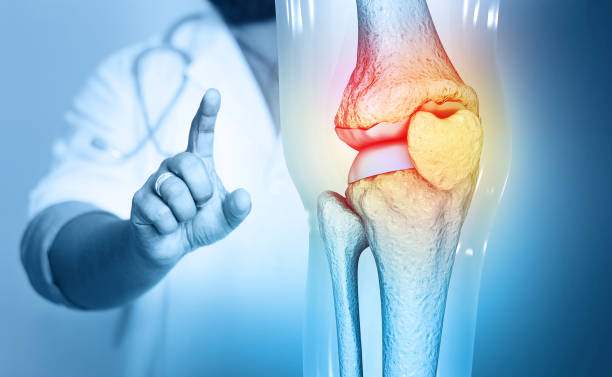A Full-Body Low Impact Home Workout for Anyone With Knee Pain
For those with knee pain, exercising at home can seem challenging, but a well-designed low-impact Home workouts for bad knees can strengthen your body while protecting your joints. This 15-minute full-body routine is tailored for beginners and anyone with knee issues, like arthritis or mild injuries, using minimal equipment (a chair, optional resistance band). It targets muscles in your upper body, core, and lower body to improve stability and mobility without aggravating your knees. Always consult a doctor before starting, especially if pain is severe. Below is a safe, effective workout you can do at home.
The Workout Routine:
This routine includes five exercises, each lasting 3 minutes (e.g., 2–3 sets of 12–15 reps or timed holds), designed to minimize knee stress while delivering a full-body workout. Perform the exercises in a circuit, resting 30–60 seconds between each for recovery. Aim for 3–5 sessions per week.
- Seated Leg Extensions (Quads, Core)
- How to Do It: Sit upright on a sturdy chair, feet flat on the floor. Slowly extend one leg straight out, keeping your knee slightly bent to avoid locking. Hold for 2 seconds, then lower without letting your foot touch the ground. Switch legs.
- Reps/Time: 2–3 sets of 12–15 reps per leg.
- Benefits: Strengthens quadriceps to support knee joints without impact.
- Tip: Engage your core to stabilize and avoid arching your back.
- Wall-Supported Partial Squats (Glutes, Thighs)
- How to Do It: Stand with your back flat against a wall, feet hip-width about 2 feet away. Slide down until thighs are at a ~45-degree angle (or less if knees feel strain). Hold for 2–3 seconds, then slide back up.
- Reps/Time: 2–3 sets of 10–12 reps.
- Benefits: Builds glute and thigh strength to stabilize knees, minimizing joint stress.
- Tip: Keep knees over ankles; stop if you feel knee pain.
- Side-Lying Leg Lifts (Hips, Outer Thighs)
- How to Do It: Lie on your right side on a yoga mat, head supported by your arm or a pillow. Lift your left leg to hip height, keeping it straight, then lower slowly. Switch sides after completing reps.
- Reps/Time: 2–3 sets of 15 reps per side.
- Benefits: Strengthens hip abductors to improve knee alignment and stability.
- Tip: Move slowly to avoid momentum; use a band for extra resistance.
- Seated Hamstring Curls with Band (Hamstrings, Calves)
- How to Do It: Sit on a chair, loop a resistance band around one ankle, anchor it under the chair. Pull your heel toward the chair, bending your knee, then slowly extend. Switch legs.
- Reps/Time: 2–3 sets of 12–15 reps per leg.
- Benefits: Strengthens hamstrings to balance knee support, low-impact.
- Tip: Keep movements controlled; skip the band if unavailable.
- Seated Upper Body Rotations (Core, Upper Back)
- How to Do It: Sit upright, feet flat, hands on hips or holding a light weight (e.g., water bottle). Rotate your torso to the right, hold for 1 second, then rotate left. Keep hips stable.
- Reps/Time: 2–3 sets of 15 reps per side.
- Benefits: Engages core and upper back without knee stress, improving posture.
- Tip: Move slowly to engage muscles, not momentum.
Workout Table
| Exercise | Target Area | Reps/Time | Equipment | Key Tip |
|---|---|---|---|---|
| Seated Leg Extensions | Quads, Core | 2–3 sets, 12–15/leg | Chair | Keep knee slightly bent |
| Wall-Supported Squats | Glutes, Thighs | 2–3 sets, 10–12 reps | Wall | Stop if knees hurt |
| Side-Lying Leg Lifts | Hips, Outer Thighs | 2–3 sets, 15/leg | Mat, optional band | Move slowly, no swinging |
| Seated Hamstring Curls | Hamstrings, Calves | 2–3 sets, 12–15/leg | Chair, optional band | Control band tension |
| Seated Upper Body Rotations | Core, Upper Back | 2–3 sets, 15/side | Chair, optional weight | Stabilize hips, engage core |
Lower-body stretches for knee pain
Why Stretch for Knee Pain?
Stretching strengthens supporting muscles (e.g., quads, hamstrings) and improves blood flow, reducing inflammation and tension around the knee joint. A 2024 study from the Arthritis Foundation found that regular stretching can decrease knee discomfort by up to 30% in adults over 50. These stretches take just 10–15 minutes daily, making them perfect for busy schedules or as part of your 2025 home fitness plan.
5 Lower-Body Stretches for Knee Pain
- Seated Hamstring Stretch
- Purpose: Lengthens hamstrings to reduce knee tension.
- How-To: Sit on a chair, extend one leg forward with toes up, and keep the other foot flat. Lean slightly forward until you feel a gentle stretch in the back of your thigh. Hold for 30 seconds per leg.
- Reps: 2 per side.
- Tip: Keep your back straight to avoid strain.
- Equipment: Chair (optional yoga strap for deeper stretch).
- Quad Stretch with Support
- Purpose: Stretches quadriceps to support knee alignment.
- How-To: Stand near a wall for balance, hold one foot behind you with your hand, and gently pull toward your glutes. Keep knees aligned and pelvis neutral. Hold for 30 seconds per leg.
- Reps: 2 per side.
- Tip: Avoid pulling too hard to prevent knee stress.
- Equipment: Wall or chair for balance.
- Calf Stretch Against Wall
- Purpose: Relieves calf tightness that can pull on knees.
- How-To: Face a wall, place hands on it, and step one foot back, keeping it straight with the heel down. Bend the front knee slightly. Hold for 30 seconds per leg.
- Reps: 2 per side.
- Tip: Ensure the back heel stays grounded for maximum stretch.
- Equipment: Wall.
- Supine Inner Thigh Stretch
- Purpose: Opens hips and inner thighs to reduce knee strain.
- How-To: Lie on your back, bring soles of feet together, and let knees fall outward (butterfly position). Gently press knees down if comfortable. Hold for 45 seconds.
- Reps: 2 rounds.
- Tip: Use pillows under knees for support if needed.
- Equipment: Yoga mat or towel.
- Seated IT Band Stretch
- Purpose: Targets the iliotibial band to ease lateral knee pain.
- How-To: Sit on a chair, cross one leg over the other, and gently press the raised knee down while leaning forward slightly. Hold for 30 seconds per side.
- Reps: 2 per side.
- Tip: Keep your torso upright to focus on the outer thigh.
- Equipment: Chair.
Sample 10-Minute Stretching Routine
Combine these stretches into a daily routine:
- 0:00–2:00: Seated Hamstring Stretch (1 min per leg).
- 2:00–4:00: Quad Stretch with Support (1 min per leg).
- 4:00–6:00: Calf Stretch Against Wall (1 min per leg).
- 6:00–8:00: Supine Inner Thigh Stretch (2 min).
- 8:00–10:00: Seated IT Band Stretch (1 min per side).
Tips for Safe Stretching
- Warm Up First: Walk gently for 3–5 minutes to loosen muscles.
- Breathe Deeply: Inhale to prepare, exhale to deepen the stretch.
- Stop if Painful: Mild discomfort is normal; sharp pain means stop.
- Use Props: Chairs or walls add stability, especially for beginners.
- Consistency Matters: Stretch daily for best results, ideally post-workout or in the evening.
5 knee-strengthening exercises
Strengthening the muscles around your knees can significantly reduce discomfort and enhance stability. Here are five effective exercises to help fortify your knees:
1. Quad Sets: Sit or lie with your legs extended. Tighten your thigh muscles and press the back of your knee down into the floor. Hold for 5 seconds and then release. Repeat this movement 10 times.
2. Straight Leg Raises: Lie on your back, one leg bent and the other straight. Lift the straight leg to the height of the bent knee, hold for 5 seconds, and then lower it slowly. Perform 10-15 reps for each leg.
3. Step-ups: Utilize a low step or platform. Step up with one foot, then the other, maintaining controlled movements. Step down and repeat to strengthen your quadriceps with minimal impact.
4. Hamstring Curls: Stand and gently bend one knee behind you, bringing your heel toward your buttocks. Hold briefly before lowering your leg. Complete 10-15 reps per leg.
5. Calf Raises: Stand with feet shoulder-width apart. Slowly rise onto your toes and then lower back down. Holding onto a chair can help with balance during this exercise.
Modifications for Common Exercises
Creating home workouts for bad knees requires thoughtful modifications to protect your joints while still building strength and mobility. By adapting high-impact exercises into low-impact, knee-friendly alternatives, you can stay active at home without aggravating knee pain from conditions like arthritis or past injuries. These adjustments ensure your home workouts for bad knees are safe, effective, and sustainable, helping you achieve your 2025 fitness goals with confidence. Below, we explore key strategies to make exercises joint-friendly, emphasizing proper form, supportive equipment, and low-impact moves.
Switch to Reverse Lunges for Leg Strength
Traditional lunges can strain knees due to forward stepping. Instead, incorporate reverse lunges into your home workouts for bad knees. Step backward with one foot, keeping your front knee aligned over your ankle, and lower gently. This reduces knee pressure while targeting quads, hamstrings, and glutes. Perform 10–12 reps per leg, using a chair for balance if needed. This modification supports joint health, as noted by the Arthritis Foundation, which recommends controlled movements for knee pain relief.
Replace Jumping Jacks with Step Jacks
High-impact moves like jumping jacks can jolt your knees. For home workouts for bad knees, try step jacks instead. Step one foot out to the side, raise your arms overhead, then return and repeat on the other side. This low-impact cardio move maintains heart rate benefits without joint stress. Aim for 30 seconds to start, building endurance over time. Step jacks are ideal for small spaces, making them perfect for home fitness.
Swap Burpees for Standing Knee Lifts
Burpees, with their jumps and deep squats, can exacerbate knee pain. A safer alternative for home workouts for bad knees is standing knee lifts. Stand tall, lift one knee to hip height, and alternate sides while engaging your core. Add arm swings for a cardio boost. Do 15 reps per side, focusing on controlled movements to protect your joints. This move enhances balance and strengthens hip flexors, supporting knee stability.
Use Equipment for Added Support
Incorporating tools can make home workouts for bad knees more effective and comfortable. Try wall squats with a stability ball placed between your back and a wall to distribute weight evenly, reducing knee strain. Roll down to a partial squat and hold for 10 seconds, repeating 8–10 times. Resistance bands are another excellent addition, offering controlled resistance for exercises like seated leg extensions. Loop a band around your ankles and extend one leg at a time for 12 reps per side. Check our “Recovery & Health Aids” post for tool recommendations and affiliate links.
Prioritize Proper Form
Form is critical in home workouts for bad knees to prevent unnecessary stress. Engage your core, keep your back straight, and move deliberately during each exercise. For example, in reverse lunges, ensure your front knee doesn’t extend past your toes. Proper alignment reduces joint strain and enhances workout effectiveness. Pair these routines with anti-inflammatory nutrition, like our turmeric chicken bowl from “Nutrition & Meal Plans,” to further support knee health.
Tips for Consistency and Progress
Maintaining consistency in home workouts for bad knees is key to improving joint health and fitness safely. Schedule 15-minute low-impact sessions 3–5 times weekly, integrating exercises like seated leg extensions to strengthen supporting muscles. Track progress with apps like MyFitnessPal, adjusting routines as knees improve. Stay motivated by setting small goals, such as increasing stretch duration, ensuring steady progress in your home workouts for bad knees without risking injury. Pair with anti-inflammatory nutrition from our “Nutrition & Meal Plans” post to support recovery and sustain your 2025 fitness journey.
Consulting Professionals
Consulting a professional can be a crucial step in managing knee pain and ensuring a safe exercise regimen. A physical therapist can assess your specific condition, offer tailored advice, and design a program that accommodates your needs. This personalized approach helps in addressing imbalances and preventing further injury.
Before starting any new exercise routine, it’s also wise to discuss your plans with your healthcare provider. They can help identify any potential risks and ensure that your workout choices are appropriate for your condition.
Additionally, consider seeking guidance from a certified fitness trainer who has experience working with individuals dealing with knee issues. They can demonstrate proper techniques, offer modifications, and provide support as you progress. This can be particularly beneficial in maintaining motivation and achieving your fitness goals without compromising your knee health.
Remember, professional guidance can offer insights that are difficult to obtain through self-directed efforts. Investing in expert advice can make a significant difference in your long-term well-being and fitness journey.
Conclusion
Embracing home workouts for bad knees empowers you to stay active, reduce pain, and build strength safely from the comfort of home. By incorporating our low-impact routines, such as seated leg extensions and lower-body stretches, along with anti-inflammatory nutrition and recovery tools like foam rollers, you can achieve your 2025 fitness goals without stressing your joints. Consistency is key—start with our 15-minute daily plan, track progress with apps, and nourish your body with recipes from our “Nutrition & Meal Plans” post. Download our free “2025 Knee-Friendly Workout Plan” PDF to kickstart your journey today. Join Choovia’s community to share your progress and stay motivated. Let’s make fitness accessible and sustainable for everyone, one gentle step at a time!
Resources:
Mayo Clinic: Knee Pain – Exercise Tips – Offers expert advice on safe exercises for knee pain, reinforcing the importance of consulting a doctor and using proper form.
National Institute on Aging: Exercise and Physical Activity – Highlights low-impact routines for older adults, aligning with the post’s focus on accessibility for all fitness levels







